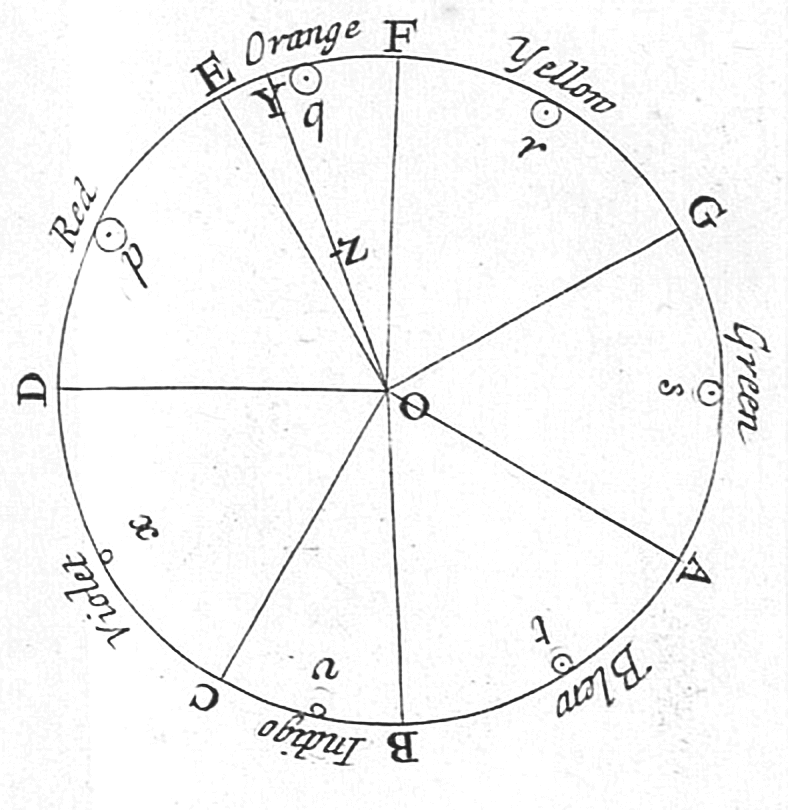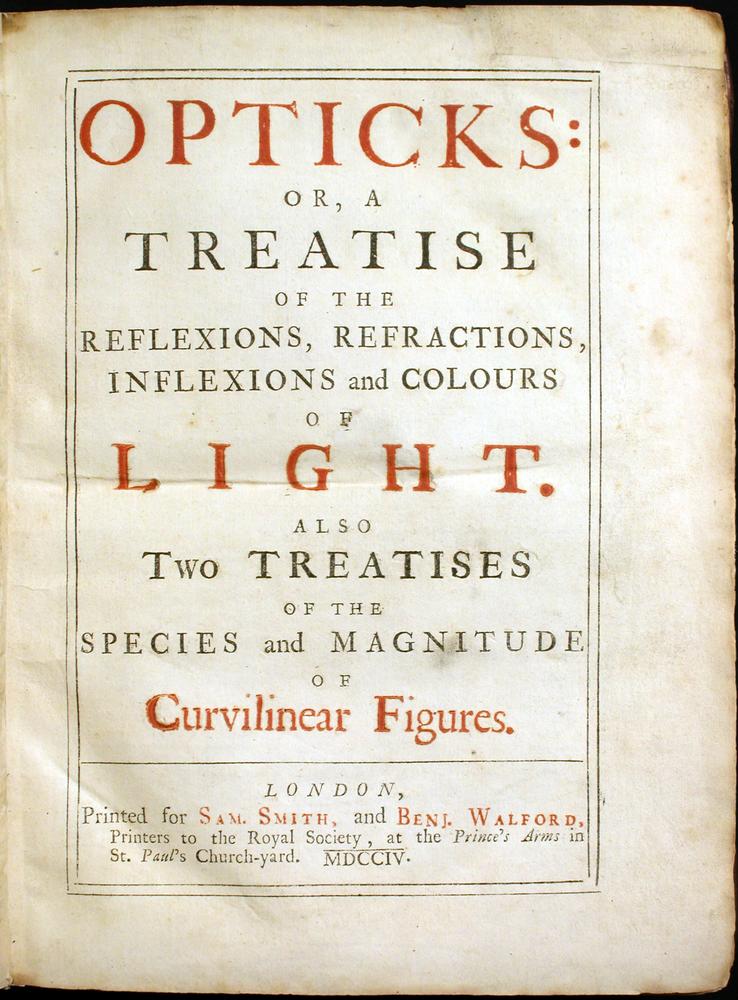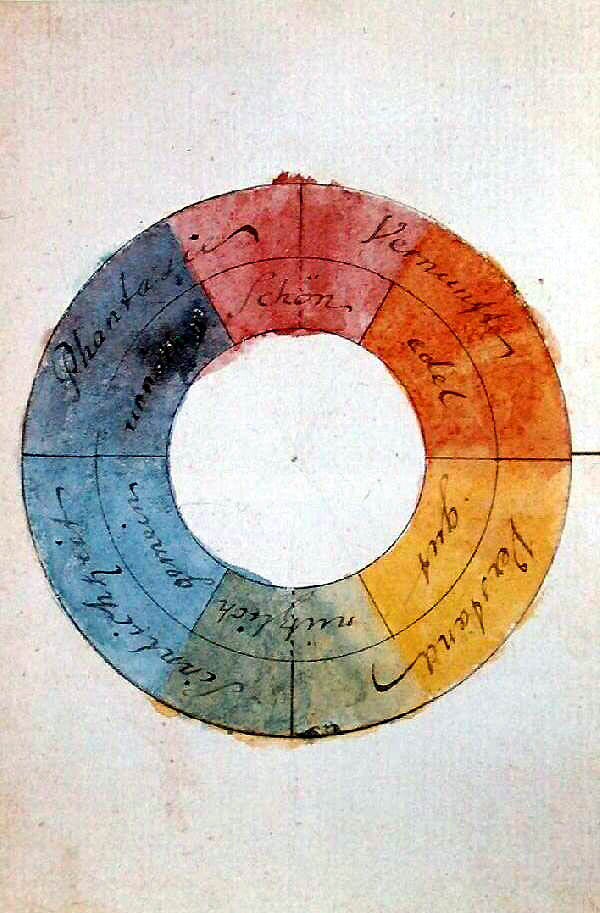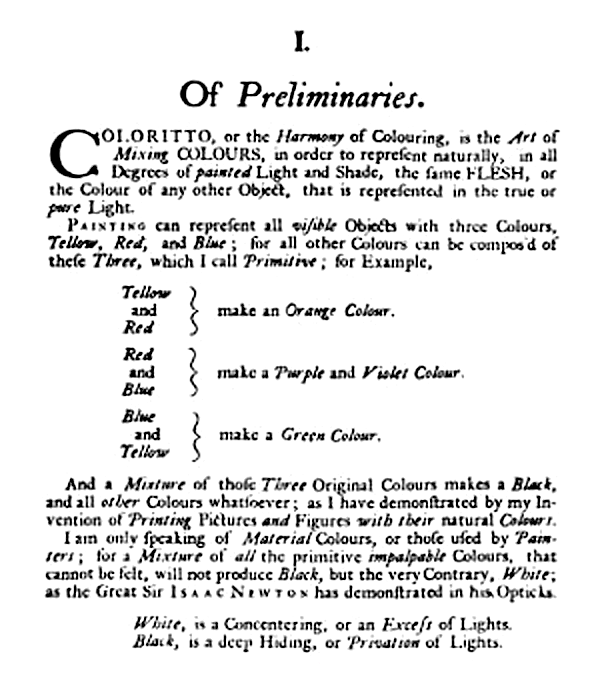The Enlightenment (c. 1650 to 1800)
Newton: the rainbow spectrum and optics

Sir Isaac Newton is credited with developing the first colour wheel in 1672 (Figure 1.7) based on colour hue relationships. He identified the rainbow spectrum through his experiments with light and prisms. His work led to many breakthroughs in optics, physics and chemistry. Newton’s publication Opticks (Figure 1.8) is recognised as one of the great works of science. It documents Newton’s discoveries in identifying the visible spectrum and the colours ROYGBIV (Red, Orange, Yellow, Green, Blue, Indigo, Violet). See Chapter 2 – Colour theory: the visible spectrum for details about this theory.
Link to the Gutenberg Ebook of Opticks

Goethe and Schopenhauer: perceptual colour and colour aesthetics
Johann Wolfgang von Goethe (poet and artist), published his Theory of Colors in 1810 (Figure 1.9). He was dismissed by many, perhaps because he refuted Newton’s theories of colour by suggesting that colour was subjectively experienced. He thought that darkness was an important part of the colour spectrum. His explorations of the psychological impact of colour on mood is considered the earliest systematic study of this kind.
His work influenced artists like J.M.W. Turner (Painting Light and Colour (Goethe’s Theory)- the Morning after the Deluge. Moses writing the Book of Genesis 1943). View this painting on The Tate gallery website: The Tate: Joseph Mallord William Turner, Light and Colour (Goethe’s Theory) – the Morning after the Deluge – Moses Writing the Book of Genesis

The German philosopher Arthur Schopenhauer wrote his book On Vision and Colours, which was heavily influenced by his discussions with Goethe. Despite theoretical differences, they were both interested in physiological perception of colour. Johannes Itten based his work with colour on these theories (see 1.3 Colour Aesthetics for more about Itten).
Learn more here:
Le Blon: the first three-colour printing method
Jacob Christoph Le Blon (a.k.a. Jakob Christoffel Le Blon) was the first to devise a three-colour printing method in 1710, using the traditional primary colours Red, Yellow and Blue (Figure 1.10). This formed the basis for our CMYK colour printing system today. He used the printing method of Mezzotint to create three or four engraved plates, each with a different colour, which allowed for making prints with a wide range of colours.
See his book on Archive.org: Coloritto, or, The harmony of colouring in painting : reduced to mechanical practice, under easy precepts and infallible rules, together with some colour’d figures, in order to render the said precepts and rules intelligible not only to painters, but even to all lovers of painting:

The rainbow spectrum is commonly known as the colours ROYGBIV - red, orange, yellow, green, blue, indigo and violet.
Mezzotint is a printmaking method that uses an engraving technique to create subtle gradations of tone and deep blacks.

